MENU is a series of photographs billed as “a dinner through the eyes of a photographer and a chef,” but that description doesn’t come close to describing the work of Robbie Postma, who is the subject of the photos and works as a chef, and Robert Harrison, a visual designer and photographer. The two work for J. Walter Thompson, the ad agency, in Amsterdam, where Postma runs the dining room and Harrison is a creative.
Using Postma’s face as a canvas, the two take the idea of a meal and, well, go wild. The photos are constructed and planned to the -nth degree, with some taking up to nine hours in preparation before a camera is touched. You kind of have to view the results to understand that this MENU is quite different from any list of dishes you’ve ever seen before.
Videos by VICE
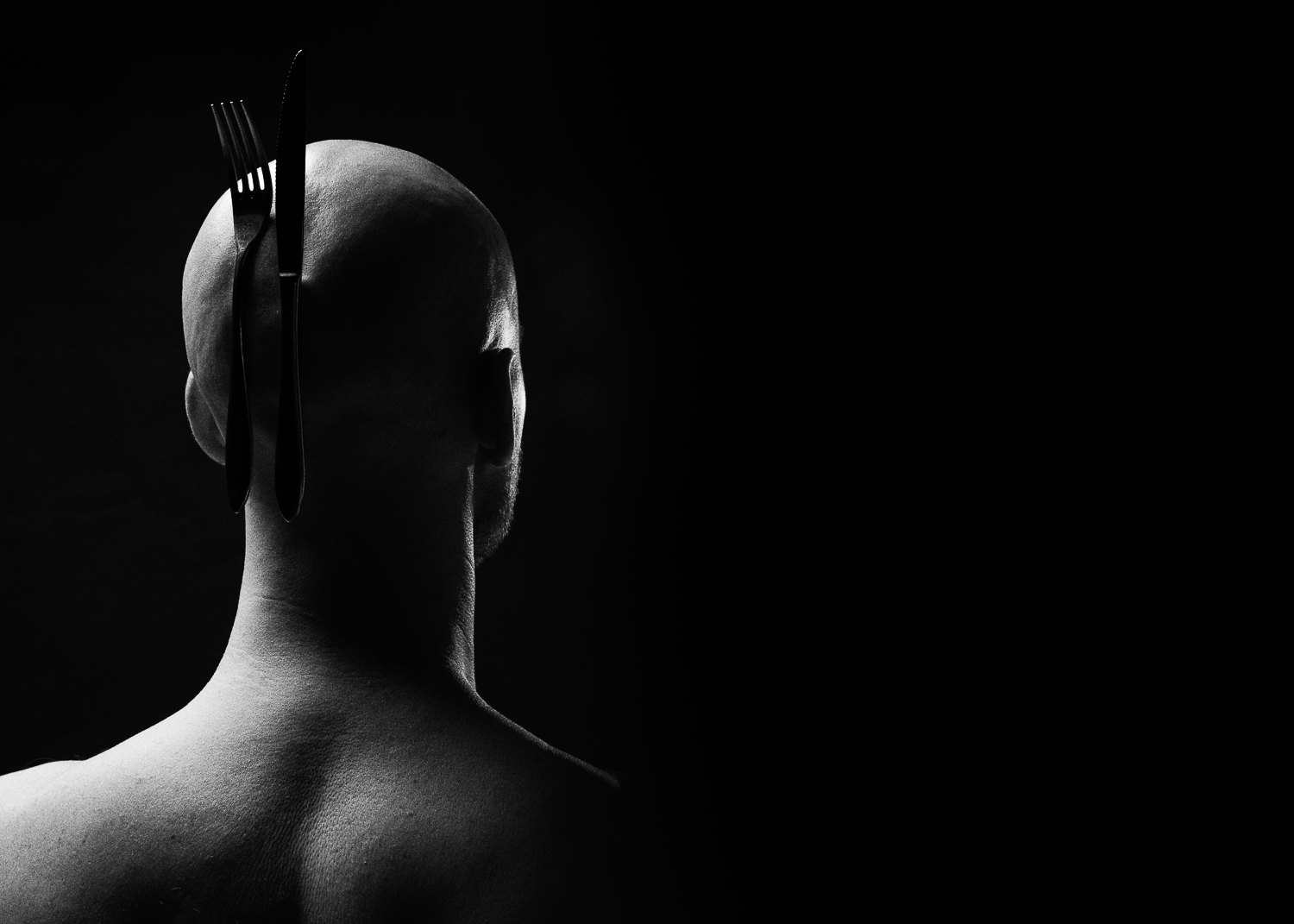
We asked Postma and Harrison to describe their process and to take us into the surreal world of MENU.
MUNCHIES: How did this particular project come about and what was your relationship like before MENU?
Robbie Postma: We actually met at work, five years ago. We immediately hit it off and were always talking about food and about cool art projects that we came across. We thought, wouldn’t it be insane if we found some found a way to combine our different expertises and come up with something new? The first shoot was at Robert’s place. After that, we knew we were onto something.

VEGETABLES. (Variety of carrots, radish and courgette.)
Considering how detailed and unique each of the faces are, just how long did the setup for each one take?
Robert Harrison: So on average, the photos would take about six hours to prepare. We wanted everything to be crafted by hand, and we really wanted the ingredients to be the hero. Robbie would go to the studio after work to start sticking ingredients onto his face in front of a mirror. Then I would turn up to set up the lightning, and help sticking the ingredients onto places that Robbie couldn’t reach—so I guess we got to know each other quite well! Our big thing was that all the photos had to be in-camera realism with no digital manipulation. So that meant that depending on the shot, we would be limited to the number of photos we could take. For WINE, for example, we only had seven photos in total at the end of the shoot because the glue wouldn’t hold when the wine hit the glass stuck on Robbie’s face.
Why did you choose to use Robbie as the face of the project?
Robert: He’s bald, he’s got great eyes, and he wasn’t afraid in the slightest to get dirty.
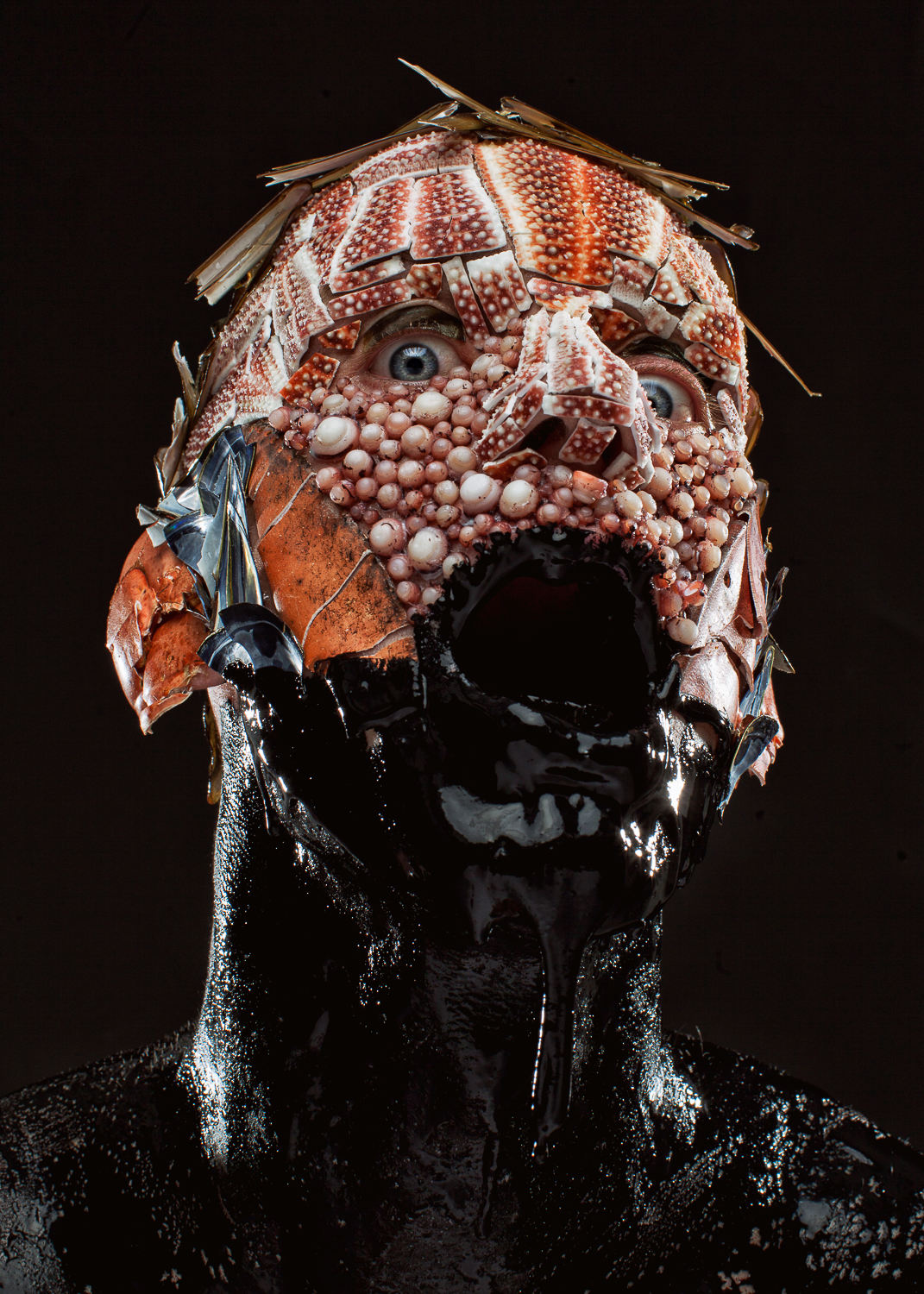
SEAFOOD. (Octopus ink, lobster, mussels, mackerel skin, octopus suckles, sea urchin and razor clams.)
Why did you choose to highlight raw, individual ingredients rather than finished dishes?
Robbie: We wanted to take the audience back to the origin of a menu. In fact, you could say we deconstructed a traditional menu, and put its raw, individual elements back together again on my face. The whole series actually follows the path of a traditional menu. Starting with the light flavors first, moving on to the stronger flavors. It keeps building up. For example, serving vegetables before fish, and fish before red meat.
I was surprised to read that the agency you both work for has a full-time chef. Can you tell us a bit about that, and the various ways food manifests itself at J. Walter Thompson Amsterdam?
Robbie: Food plays a central role in the agency, as it’s a connecting factor between the people in the agency. Every day, people come together for a fresh, high-end lunch that has never been the same for the last five years. It’s a completely new lunch, every single day. But food is also a great canvas for creativity for the brands that we work with. I try to conceptualize food to make it work for our clients. It’s a great way to surprise brands. And finally it leads to project like MENU. So all in all, food rules at J. Walter Thompson Amsterdam.

WINE. (Glass of red wine.)
Robbie, would you say that your approach and style of cooking greatly influenced the way you tackled this project?
Robbie: My insights as a chef definitely gave shape to this project. I knew exactly how a menu is built and how to approach the ingredients. Cutting the vegetables really thin, taking the octopus suckles inside out, sorting out different kinds of starch that would work interestingly together. Those are things you’ll only know as a chef. Also I’ve been plating dishes for about 20 years now, so I have got a lot of experience in making compositions. Gotta say this was the first time plating my own face though!
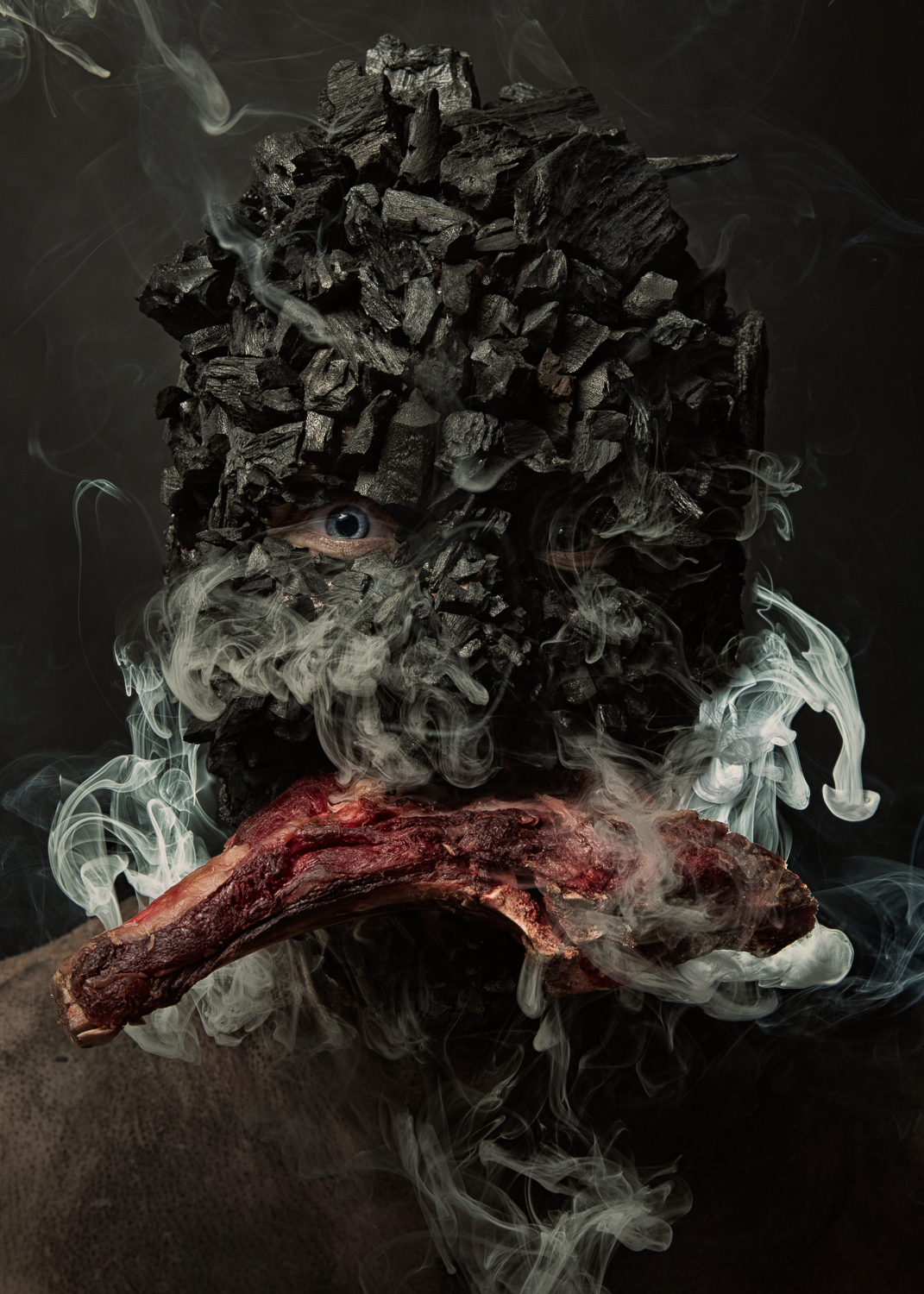
MEAT. (Charcoal, smoke and an aged prime rib.)
Some of the photos are definitely a bit disturbing on first glance, but become more beautiful as you continue to look. Is this a reaction you were actively courting?
Robert: I wanted to create something that was dark and disturbing, yet at the same time beautiful. I wanted to give the audience a ‘wow’ feeling. Yes I wanted to make it visceral and provocative, something to talk about—and as you say, something that makes you look twice at the image. Spices, for example, aren’t the strongest image on screen, but when the image is printed [on a] massive [scale], one can see the detail in the preparation, as well as the technical part of the photography.
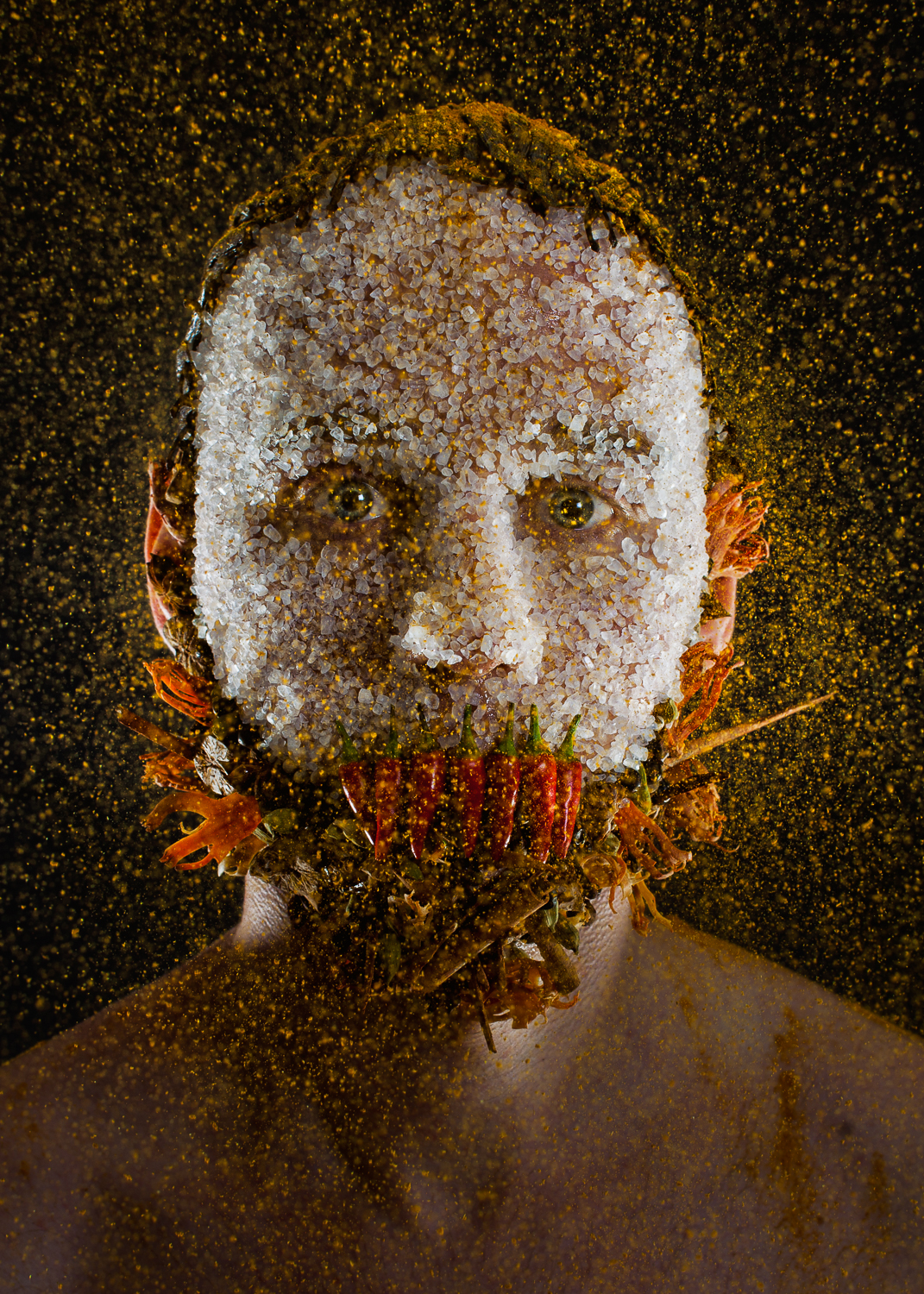
SPICES. (Vanilla, rock salt, star anise, coriander seeds, nutmeg, mace, white pepper, red peppers, cardamom and cinnamon, curry powder.)
What were your primary concerns when you were placing and composing the various ingredients on Robbie’s face for each photo?
Robert: We used special skin glue that is used in theater. Though the glue is specially designed to use on the face, when we did the first shoot we were kind of worried about ripping off Robbie’s eyebrows, so we stayed away from that area. Most of the eyebrows survived (though thinned a bit). The hard part was taking it off—the glue dissolver we used gave a pretty hard burn in Robbie’s eyes. Having the octopus ink in his mouth wasn’t a walk in the park for Robbie, either.

STARCH. (Black rice, white rice, yellow peas, borlotti beans, quinoa and wheat.)
Is there a photo in MENU that you are particularly drawn to, or surprised with how it came out?
Robbie: Vegetables! We thought it was a total flop on the night we shot it. Looking at the screen on the camera, we didn’t really like the colors and felt like it didn’t have the impact we imagined. But when we opened it up on the big screen the next day, we were quite surprised.
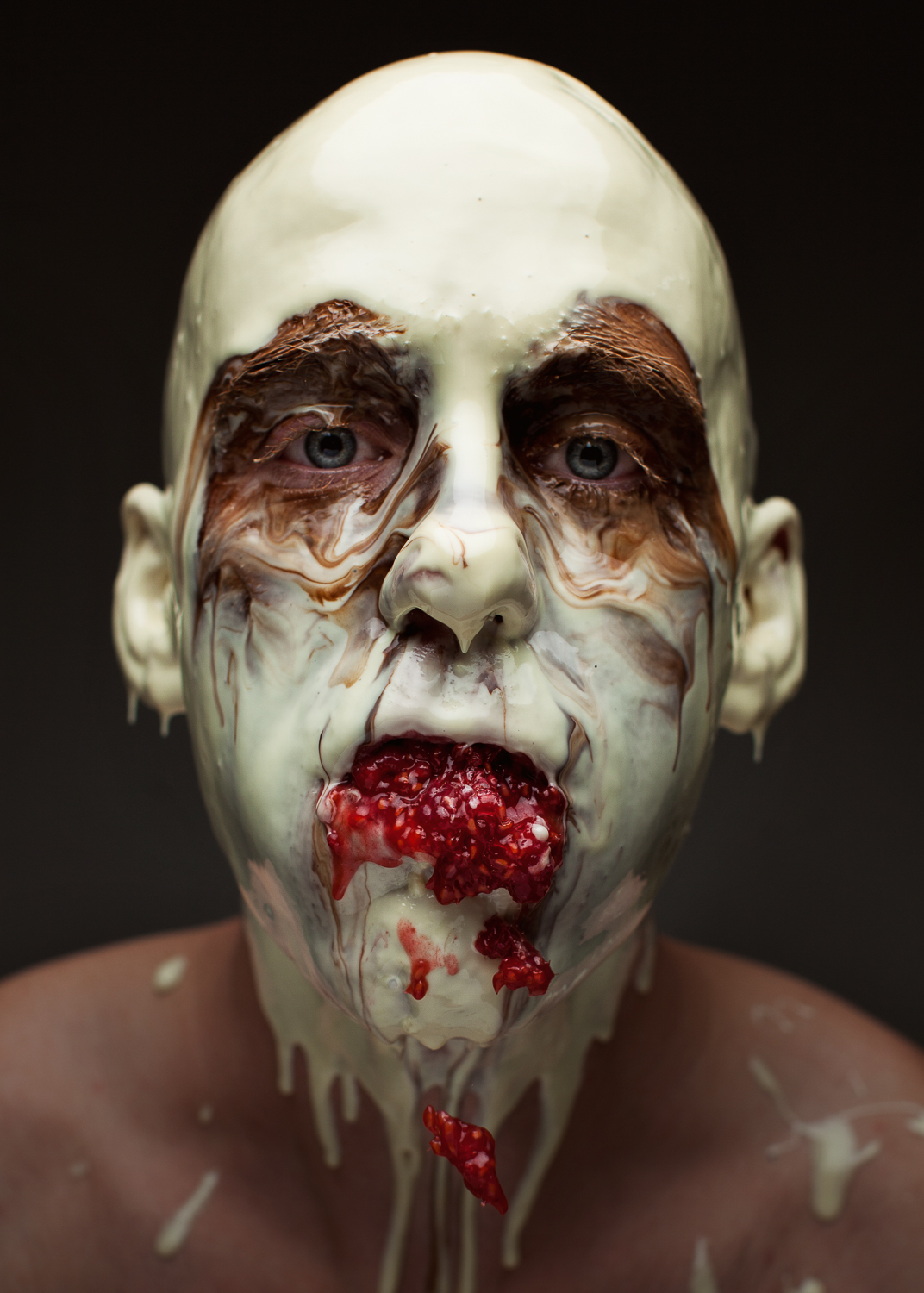
SWEETS. (White chocolate, dark chocolate and raspberries.)
What is the overall message of feeling you hope viewers take away from MENU?
Robbie: This work shows the love of craftsmanship. We want the viewer to realize that behind that delicious menu you eat in a restaurant, there are hours of preparation, passion, dedication—and NO shortcuts. It’s not just a series of dishes, it’s a carefully thought of and balanced MENU.

COFFEE. (Six differently roasted burns of coffee beans.)
Thanks for speaking with us, Robbie and Robert.
More
From VICE
-

John Carl D'Annibale/Albany Times Union/Getty Images -

The Chengdu Snow Village project in Sichuan, China. (photo: Baidu) -

Kevin Witte -

CSA Images/Getty Images
